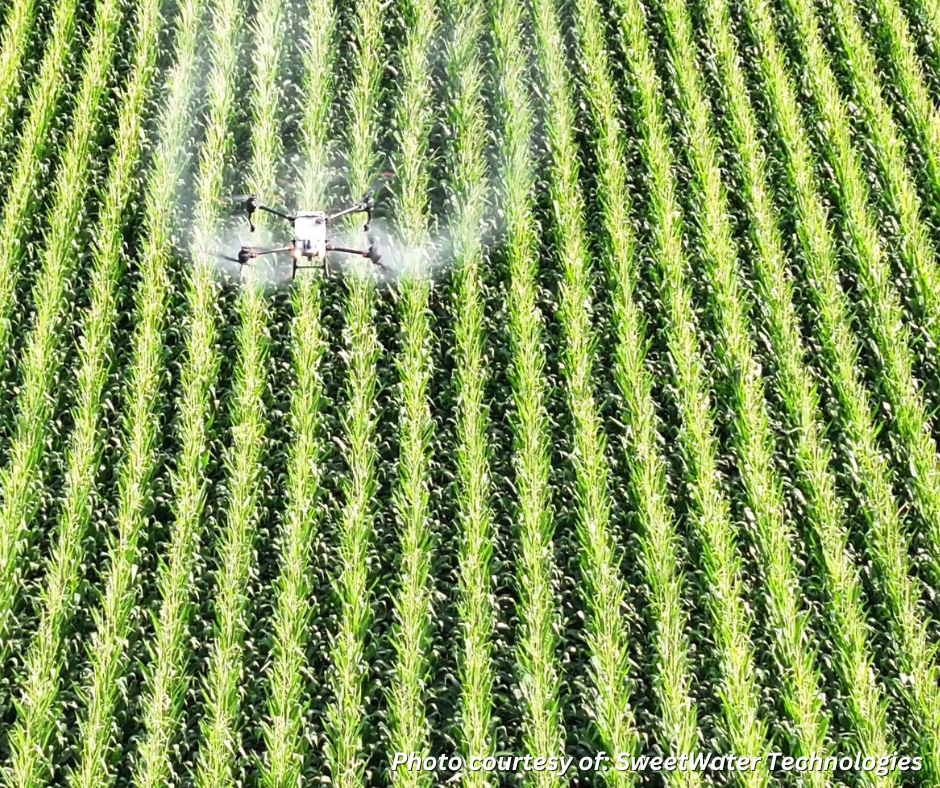Keep the Pedal Down: Farmers Will Roll Through a Bumpy 2024 with Resiliency, Innovation
Part 2 of 2
As the latest U.S. Agricultural Census revealed, just as those did before it, farming in the U.S. is undergoing a slow but profound transformation. With the number of farms dwindling to a historic low of 1.9 million from its peak in 1935, alarms are sounding that the landscape of American agriculture is at a critical juncture.
Amidst this potential shift, today’s farms are larger and more technologically advanced—steps taken to face similar challenges echoing back to last century.
Another continuing trend is the aging demographic of farmers, from 56.3 years in 2012, to 57.5 years in 2017 and to 58.1 years in 2022. Perhaps more concerning is the scarcity of young farmers. For every farmer under 35, there are six over 65. Farming is more expensive. When you fork over the capital, you’re in it for the long run. But the challenges of securing capital and resources loom large for those seeking to start their own farms.
In this era of change, it’s imperative to explore innovative avenues to support and empower the next generation of farmers, ensuring the vitality and sustainability of American agriculture for years to come. Some innovative agriculturists are challenging that roadblock head-on by thinking about new ways to help young farmers get started.
An Innovative Approach
One example is an innovative program from Sweetwater Technologies Powered by Gripp. That company is seeking owner-partners for its multi-faceted spray drone and farm service business from a younger demographic of agricultural professionals. The model is designed to connect with young people who want to join their family’s farm or start a farming business of their own. The program offers a strategic path for younger agriculturalists to generate ag-related income with the goal of securing land they can call their own.
Those farms will likely start out small, bucking today’s trend of the largest 6% of U.S. farms generating three-fourths of all sales. But the majority of U.S. farms operate on a smaller scale, sometimes struggling with margins and supplementing farm income to achieve profitability.
What makes farming even more uncertain this year is that costs are forecast to go up, while crop prices have fallen. Even weather’s mercurial characteristics are becoming even harder to predict. All-in-all, farming presents varied shapes and sizes of risk. Policies that provide a level of basic support and help manage against the plethora of risks appear to be the favored direction.
In other ways, farmers are facing risks on their own terms, by becoming more efficient and resilient. They are running their own test plots to determine what is and is not a logical practice to expand on their acres. A growing number are using agricultural biologicals, for example, to enhance soil health and crop resilience, leading to higher yields and reduced reliance on synthetic inputs. Similarly, spray drones, such as those deployed through the Sweetwater model (highlighted in Part 1) and precision agriculture technologies are enabling farmers to optimize resource allocation and monitor crop health with unprecedented efficiency and precision.
Competitive Resilience
In today’s global marketplace, agricultural competition demands efficiency and productivity. U.S. farmers are locked in an ongoing battle for global market share with farmers from other countries or trading blocs, like the BRICS nations (Brazil, Russia, India, China and South Africa). As other countries ramp up production and invest in agricultural innovation and infrastructure, the U.S. must continue to set the pace. It’s a complex dynamic to navigate, especially given the enhanced focus on quality and sustainability. A bushel is no longer just a bushel.
While emphasizing the need to expand trade through efficiency and quality, ensuring a level of overall fairness for U.S. farmers is an ongoing policy imperative.
Looking ahead, there are opportunities for U.S. farms to become more resilient. Working together and sharing knowledge can help everyone in farming be more successful. By embracing a holistic approach to agricultural development, prioritizing environmental stewardship as well as economic equity, the U.S. can chart a course toward a more sustainable and productive agricultural future. Again, with a comprehensive focus on producing more with less.
As U.S. farming changes, creative innovation and collaboration will be the key to meeting the needs of consumers. At Stratovation Group, we remain confident that in the face of projected uncertainty, America’s farmers will seize opportunities for positive change and work toward a resilient, equitable, and sustainable agricultural future. We will continue to do what we can to help our clients help farmers keep the pedal down.
—————————————-
By Mace Thornton, COO of Stratovation Group.

